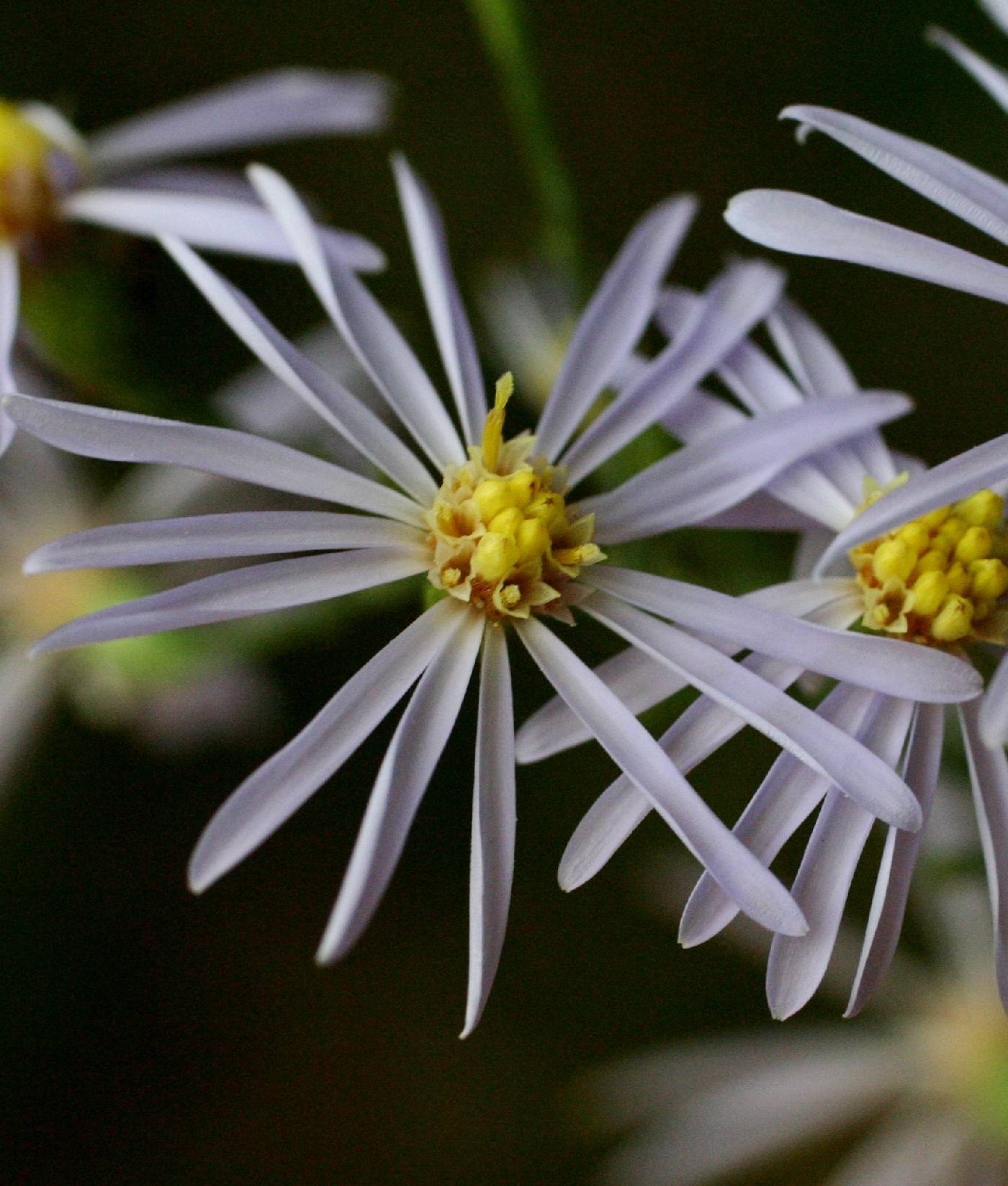Perennials, 30-150 cm, cespitose; short-rhizomatous or with ± woody caudices. Stems 1-5+, ascending to erect (straight, sometimes stout), proximally glabrous, distally ± densely hirtellous. Leaves thin, margins often slightly revolute, scabrous, apices mucronate or mucronulate, abaxial faces sparsely to moderately hispid, especially along veins, adaxial glabrous (midveins scabrous, veins marked) to strigoso-hispid (basal); basal withering by flowering (new winter rosette sometimes developing), petiolate (petioles 1-2 times as long as blades, sometimes narrowly winged, sheathing, densely pilose or hirsute), blades ovate to lance-ovate, 10-60 × 10-35 mm, deeply to shallowly cordate or rounded, margins crenate or crenate-serrate, apices obtuse to acute; proximal cauline mostly persistent, narrowly petiolate (petioles slender, progressively reduced distally, bases at most slightly clasping), blades ovate to lanceolate, 50-150 × 20-60(-70) mm, progressively reduced distally, bases shallowly cordate to subcordate, truncate, or rounded, sometimes oblique, margins entire, scabrous or shallowly crenate-serrate (proximal), apices acute to acuminate; distal short-petiolate (petioles sometimes narrowly winged, sometimes slightly clasping) or sessile (distalmost, rameal), blades ovate to lanceolate (rameal lance-linear to linear, sharply smaller), 8-80 × 1-40 mm, gradually reduced distally, bases rounded to cuneate or attenuate, margins entire to subentire, apices acute to acuminate. Heads usually in open, diffuse to narrow, paniculiform arrays, sometimes racemiform, branches widely spreading, usually divaricate to arching, sometimes ascending, sometimes ± secund, abundantly leafy. Peduncles 0.2-3(-5) cm, densely hirtellous, bracts 3-10+, ovate or lanceolate to subulate, grading into phyllaries. Involucres cylindro-campanulate, 4-6 mm. Phyllaries in 4-5(-6) series, appressed, lanceolate or oblong-lanceolate (outer) to linear-lanceolate or linear (inner), strongly unequal, bases indurate 1 / 2 - 5 / 6 , margins scarious, erose, hyaline, ciliolate, green zones lanceolate to diamond-shaped (midveins below green zone sometimes inflated and brownish), apices acute to acuminate, often involute, mucronulate, faces strigilloso-hirsutulous. Ray florets 13-15(-20); corollas usually blue or purple-blue, seldom pinkish or white, laminae (10-)11-16 × 1.3-3.1 mm. Disc florets 16-23(-28-); corollas
Flowering Aug-Oct. Open, often thin, rocky, well-drained soils, oak-hickory woods, edges of woods, thickets, calcareous hammocks, wooded stream banks or cliffs, roadsides; 100-500 m; Ont.; Ala., Ark., Fla., Ga., Ill., Ind., Iowa, Ky., Md., Mich., Minn., Miss., N.C., Pa., Tenn., Va., W.Va., Wis.
Symphyotrichum shortii is of conservation concern along the whole periphery of its range, notably in Canada; there is a report from the District of Columbia but the species is not established there. Aster shortii Lindley forma gronemannii Benke is a roseate phenotype, and forma candidus Benke a white one, forma shortii being the normal blue or purple one. They are not recognized here.
Infrequent to frequent in dry woods throughout the state, although there are no specimens or records from the northern tier of counties. It is more common toward the bases of wooded slopes. Very variable in the width of the leaves and the pubescence of the under surface of the blades, which varies from a dense, short, harsh pubescence to only a few hairs on the midrib. The bracts are usually more or less densely pubescent, at least ciliate, and generally the rhomboidal, green tip is also pubescent, usually short-acute, rarely acuminate or some of the lower ones subulate. My no. 19155 from Franklin County, collected about 2 miles west of Metamora, is cited as exceptional. This plant is glabrous to the infliorescence; above that it is only slightly pubescent and then only in lines. The leaves are narrow-lanceolate and long-acuminate, entirely glabrous both above and beneath, the margins ciliate and most of them more or less shallow-serrate to about the middle; bracts very narrow, the widest 0.5-0.6 mm wide, long-acuminate, some of the lower subulate-pointed, glabrous or minutely and finely ciliate toward the apex. It seems to agree with the description of Aster camptosorus Small.
Plants with a short, branched caudex; stems 3-12 dm, glabrous or nearly so below, spreading-hirtellous above; lvs entire or occasionally few-toothed, glabrous or scaberulous above, spreading-hirtellous beneath, lanceolate or rather narrowly ovate, acute or acuminate, petiolate, nearly all those below the infl cordate or subcordate, the lower cauline ones usually deeply so, 6-15 נ2-6 cm, the basal ones, if persistent, often shorter, broader, more rounded, and somewhat toothed, the middle and upper cauline ones only gradually reduced; infl open, paniculiform, with numerous usually narrow bracts, the bracteate peduncles often very long; invol 4-6 mm, its bracts
narrow, acute or the outer obtusish, well imbricate, usually minutely pubescent, with small, ±diamond-shaped green tip shorter than the chartaceous base; rays 10-20, blue (rose-red or white), 5-14 mm; achenes glabrous; 2n=16, ?18, ?36. Woods; sw. Pa. and adj. W.Va. and nw. Md. to Ky., Tenn., w. Ga., and ec. Ala., w. to se. Minn., ne. Io., and ne. Miss.; Ark. (A. camptosorus)
Gleason, Henry A. & Cronquist, Arthur J. 1991. Manual of vascular plants of northeastern United States and adjacent Canada. lxxv + 910 pp.
©The New York Botanical Garden. All rights reserved. Used by permission.






